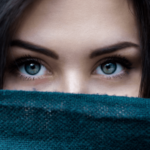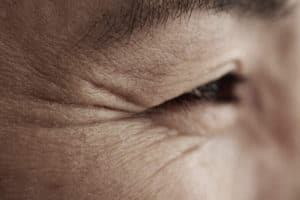Do you have many green veins or blue veins showing through the skin on your feet, legs, hands, breast, chest, or any other parts of your body? Aren’t veins supposed to be red? You may be wondering why are veins green or blue and whether they indicate a serious condition or not.
What are these green veins or blue veins? Why do veins appear green or blue through the skin? Blood and veins are always red, but veins close to the skin’s surface appear green or blue because the color is filtered. The color of the vein is filtered by the yellow color of fat, carbon dioxide, and oxygen – making the red vein appear green or blue.
Green veins or blue veins become more visible when they increase in size, mainly when there’s a dysfunction in the valves within your veins that impedes blood flow. Because of this dysfunction, backflow occurs, and blood accumulates in the vein, causing it to stretch, bulge, and enlarge. Treatment is not usually necessary, but in severe conditions, surgical and non-surgical procedures have to be performed.
Blue veins or green veins on the legs, hands, chest, and various vein junctions, among other parts of the body, are most common. The size of these green or blue veins increases when undue pressure is exerted on the veins, such as prolonged standing and when exercising strenuously.
Continue reading to learn more about green veins and blue veins, including why the veins appear green or blue through the skin.
Why Are Veins Green or Blue?
So why are veins green? Veins are always red, but veins that are seen through the skin look green or blue because the skin plus other things act as a color filter. These things that filter the red color include the yellow color of fat, carbon dioxide, and oxygen – making the red vein appear blue or green.
What is the difference between blue vs. green veins? The color of your veins will depend on your skin undertones. If you have a warm undertone, your veins will appear green or blue on the surface of your skin. If your skin has cool undertones (or paler skin), your veins will appear blue.
A skin undertone is a color underneath your skin, which reflects your skin’s overall color. So when comparing green veins vs. blue veins, warm undertones reflect green veins, while cool undertones reflect blue veins.
Why Are Veins Bigger than Usual?
More prominent green veins or blue veins showing through the skin may indicate either physiologic or pathologic conditions. If the green or blue veins are bigger than usual and are twisted and irregular, these presentations can denote varicose veins or spider veins. You may even notice green or blue veins on many parts of the body, including feet, legs, hands, breasts, chest, or hands.
So, when blue or green veins become larger and more prominent, they are called varicose veins. This problem is an abnormality in the vein’s valves that causes blood pooling, forcing the vein to stretch and become bigger or enlarged.
Varicose veins can also be painful and uncomfortable. When it worsens, it could lead to serious conditions.
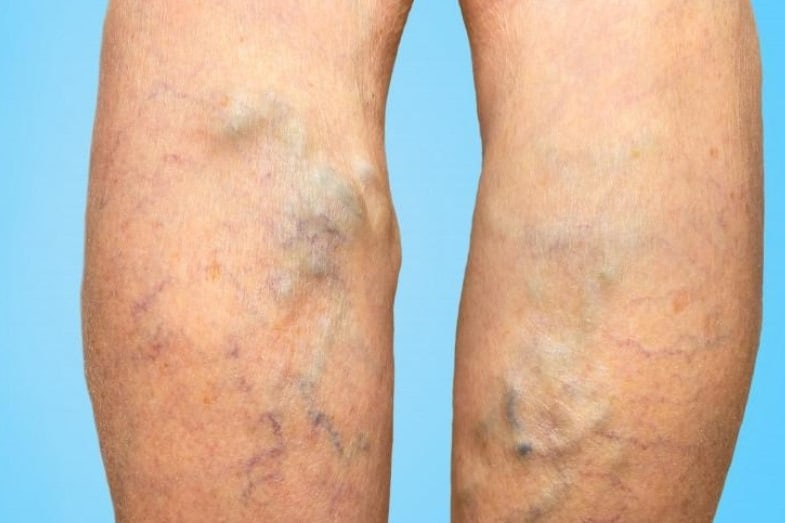
How to Reduce or Get Rid of Visible Blue or Green Veins on the Skin
You can reduce blue or green veins by resting the area of your body where they are prominent. These veins have become bigger due to physical exertion or valve dysfunction inside your veins.
When the root cause of your blue or green veins is due to physical exertion, you can reduce the veins by stopping the activity. When the cause of blue or green vein enlargement is due to valve dysfunction, you have to undergo treatment for it.
If the condition has just started, you can reduce the size of your blue or green veins by raising your legs at night and by using elastic compression stockings. For more pointers on the prevention of large blue or green veins, refer to the tips below.
Blue Vs Green Veins
In the case of blue vs. green veins, they are both veins seen under different skin undertones. The green vein shows under a warm undertone, while the blue vein shows under a cool undertone. Underneath the skin, they appear the same, but when light passes through the skin’s surface, the reflected color tends to vary.
When they are both enlarged and become prominent, their color difference won’t matter anymore, as they would be called varicose veins.
Causes of Green or Blue Veins
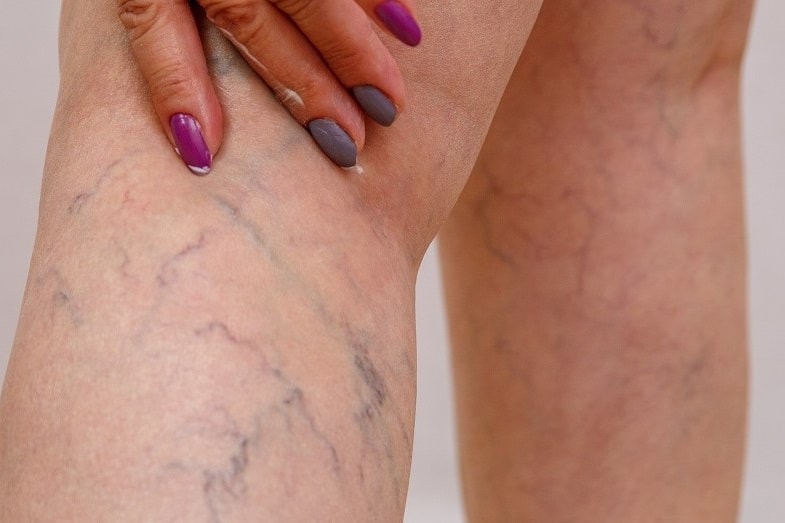
As previously stated, the leading cause of twisted and bigger green or blue veins is the dysfunction of the valves within the veins. Also, some aspects could increase your risk of developing varicose veins. They include:
- Genetics – When your family has a history of varicose veins, it increases your risk of inheriting it in your genes. Most probably, you or any of your children would have varicose veins, too.
- Gender – Females are more prone to developing varicose veins because female hormones affect the nature of the veins. Progesterone and estrogens, such as estriol, estrone, and estradiol, can cause the veins to dilate and make them bigger. On the other hand, men don’t have significant levels of these hormones because they have more male hormones, such as testosterone, which doesn’t dilate the veins. Thus, males are less prone to varicose veins.
- Lifestyle – If your lifestyle involves carrying heavy objects or standing for long periods, these activities can cause an enlargement of green veins or blue veins. Sitting down now and then when your work requires prolonged standing can minimize your risk of developing varicose veins.
- Obesity – Obesity can also increase your risk of having varicose veins, as your extra weight would exert undue pressure, not only on your legs but on the different parts of your body as well.
- Chronic Constipation – When you strain to defecate, you’re exerting pressure on your anal veins. Straining can cause your veins to bulge and enlarge, causing anal varicose veins.
- Vein Damage or Injury – Vein damage, such as inflammation or blood clots, can impede the smooth flow of blood, allowing the blood to accumulate in pools in your veins and cause varicose veins.
- Pregnancy – Pregnancy also exerts extra weight on your legs; thereby, increasing your risk of varicose veins. So, pregnant women have to rest and raise their legs for a few minutes during the day to avoid getting varicose veins. It’s common for pregnant women to have blue veins or green veins on the breast, especially after birth.
- Age – The older you get, the more prone you are to varicose veins. The reason is that your veins are more fragile and easily damaged as you grow older. The smooth flow of blood could also deteriorate as your organs get “older,” too.
- Circulatory Problems – Veins are part of your body’s circulatory system. So, if there you have other circulatory problems, your veins could also be affected and become more prominent, too.
To find out if you have varicose veins, you would have to know its symptoms and how it can be diagnosed.
How Are Varicose Veins Diagnosed?
Since varicose veins are visible to the eyes, they can be diagnosed through physical examination. In addition, other related symptoms could also help diagnose the condition. If you’re able to display two or more signs and symptoms, then they’re enough to confirm that you have varicose veins.
For severe conditions, doctors often recommend an ultrasound or Doppler test or a duplex ultrasound to view the structure of the veins and to find out if there are any blood clots or inflammation inside them.
Additionally, to determine vein function and proper blood flow, air plethysmography (APG) is used. This test will find out if there’s sufficient blood flowing to the legs’ arteries and veins.
Symptoms of Varicose Veins
- Discoloration of the skin around the ankle area
- Swelling of the legs
- Leg cramps or numbness
- Bulging of veins (even without physical exertion)
- Bigger and more prominent veins
- Twisted, irregularly-shaped veins
- Muscle fatigue and heaviness in the legs
- Pain or throbbing in the affected area
- Itchy and dry skin around the area of the affected veins
If you experience one or two of the symptoms above, consult your physician immediately to prevent the worsening of your varicose veins. Untreated severe cases of varicose veins can also lead to phlebitis or thrombosis. The skin over your varicose veins could be easily cut and injured, too. Your skin becomes thinner and fragile because of varicose veins.
Phlebitis is the inflammation of the vein’s walls, while thrombosis is the formation of blood clots in the veins. These conditions can prevent the normal flow of blood to the heart and back and could become life-threatening if left untreated.
Treatments for Enlarged Green Veins or Blue Veins (Varicose Veins)
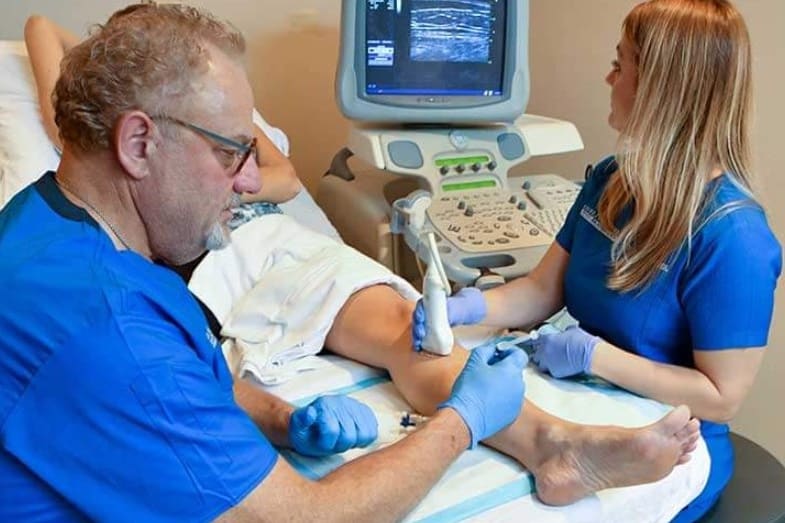
There are two types of varicose vein treatment: surgical and non-surgical methods. For the non-surgical methods, you have the following:
Non-Surgical Treatments
1. Endovenous Thermal Ablation
This method uses heat from a laser to seal the veins. It involves the use of a catheter with an ultrasound scanner, which is inserted into the vein for internal viewing.
2. Sclerotherapy
This procedure uses a special solution that is injected into the affected vein. This solution hardens the vein and seals it off. The blood is then forced to flow to healthier veins.
Ultrasound-guided sclerotherapy (UGS) is performed for deeper green veins or blue veins. This procedure lets the doctor view the vein on a screen during treatment. However, there are also contraindications to this method, which include allergy to the solution used, existing pregnancy, and blood clotting disorders. Ensure that you don’t have any of these conditions before agreeing to the procedure.
3. Ambulatory Phlebectomy
This method involves the removal of varicose veins through small slits in the skin. Its skin scrapings can disappear within a few days.
Surgical Treatment
The doctor can perform surgery by tying off the varicose vein at a junction where blood would not be able to flow to the affected vein. These veins could be in the calf muscle, upper thighs, or veins behind the knee.
The doctor could also remove the blue vein or green vein after tying the larger vein connected to it through ligation and stripping. The varicose vein is eliminated through an attached instrument.
How to Prevent Green Veins or Blue Veins from Growing
You can prevent your green veins or blue veins from getting bigger by doing the following tips:
- Avoid standing for long periods. If you need to, you should take breaks to rest your legs and raise them for a few minutes. You can also alternately shift your weight from one foot to another.
- Exercise for at least 30 minutes to one hour daily. Avoid exercises that exert substantial pressure on your lower torso and legs, such as weightlifting, and similar activities.
- Avoid constrictive clothing that restricts the movement of your legs and groin. Wearing tight clothes can constrict the veins and impede blood flow.
- Eat fiber-rich foods, such as vegetables, whole grains, and fruits, to avoid constipation and straining.
- Maintain a healthy weight, so that your legs can carry you, as heavy pressure on your lower extremities would increase your risk of developing large blue or green veins.
Conclusion – What Are Green or Blue Veins: Causes and Treatments?
SO to revisit our initial question: Why do veins appear green or blue on the skin? Blood and veins are always red, but veins close to the skin’s surface appear blue or green because the red color is filtered. The color of the vein is filtered by carbon dioxide, oxygen, and the yellow color of fat – making the red vein appear green or blue.
Green veins are typical veins that show on people with warm undertones. Blue veins appear on anyone with cool undertones or paler skin. When these green or blue veins become more prominent, they turn into varicose veins.
The major cause of large green veins or blue veins is the pooling of blood in the veins due to the backflow of blood caused by damaged valves.
The treatment for green or blue veins depends on the severity. Treatment could either be surgical or non-surgical. In mild cases, you don’t need surgical treatment. Rest, relaxation, and observance of preventive measures will do.
Blue or green veins are not dangerous per se, as long as they’re normal in size and are not too prominent under your skin.
Related reading:
Vitiligo: Michael Jackson’s Skin Condition
Why Is Donald Trump’s Skin So Orange? 4 Possible Reasons

